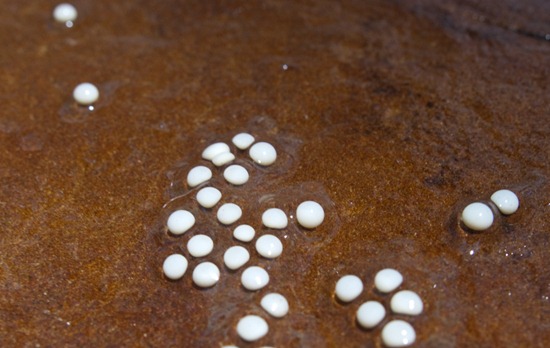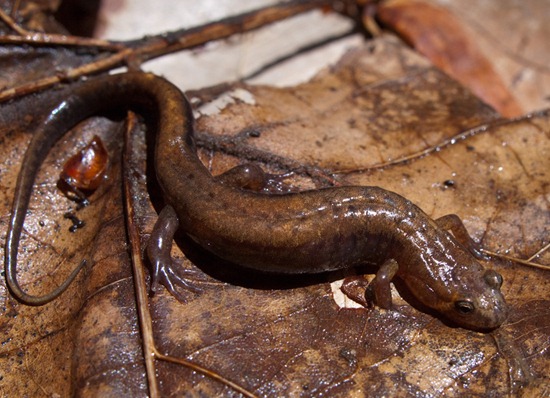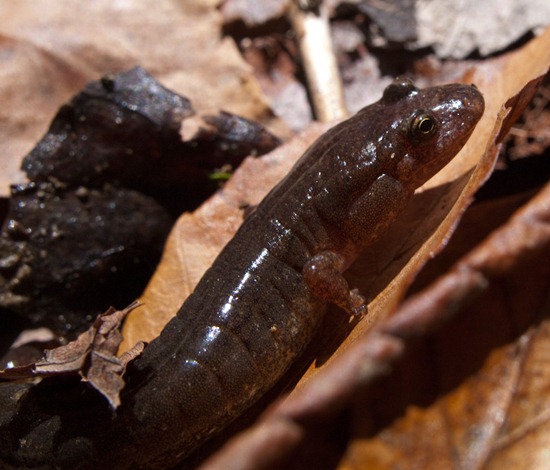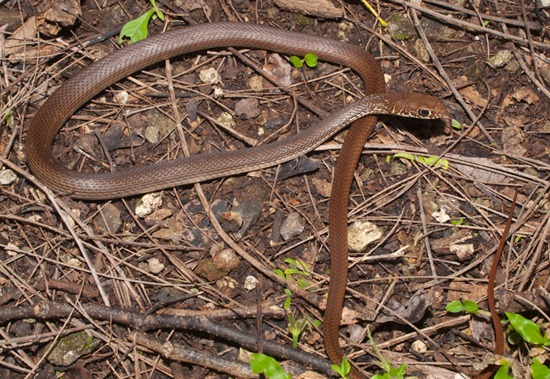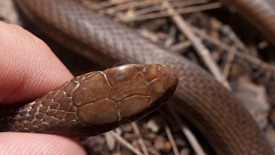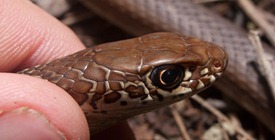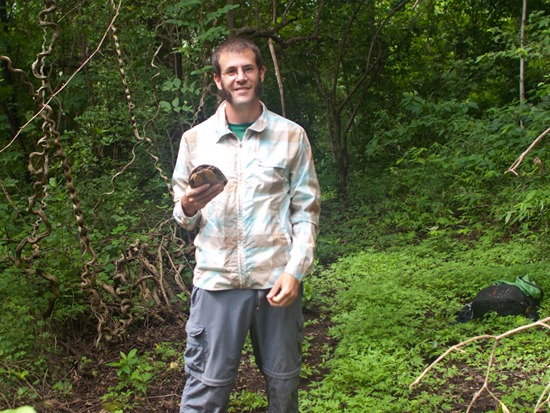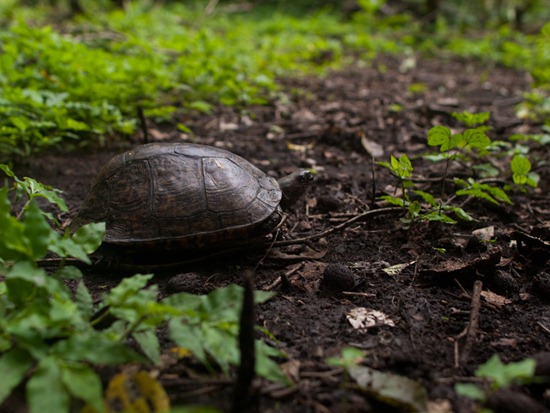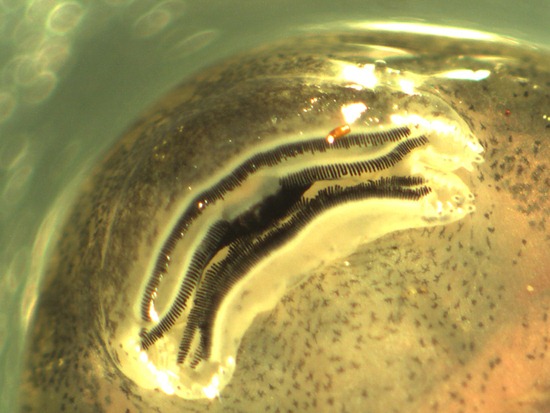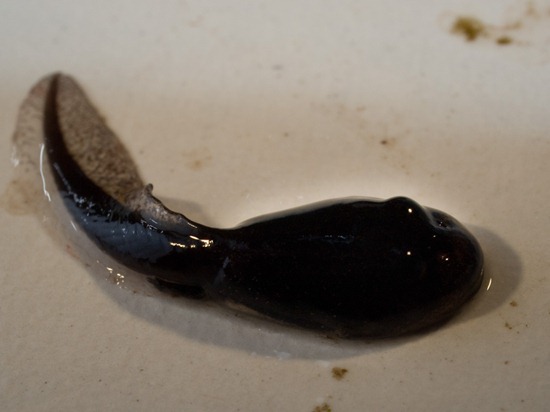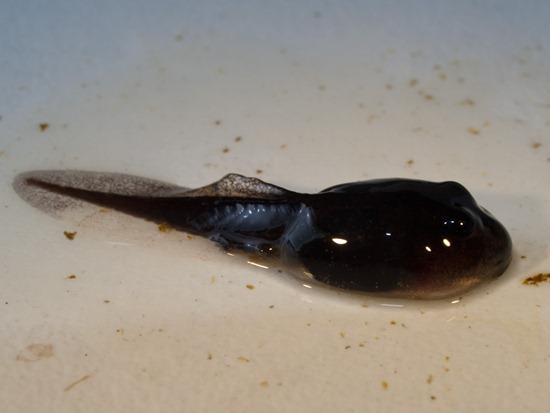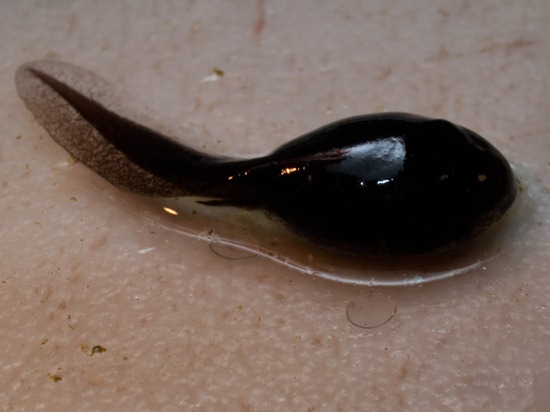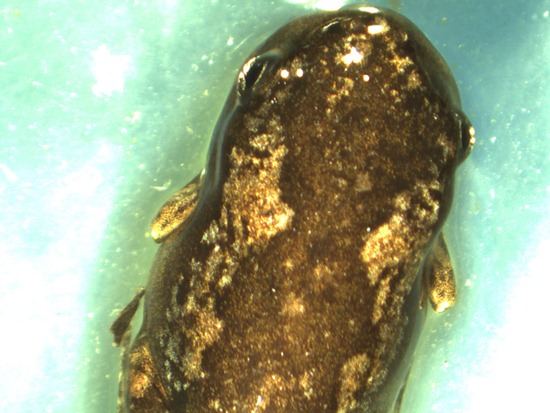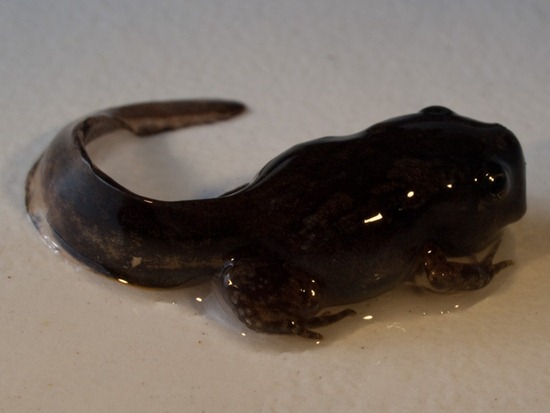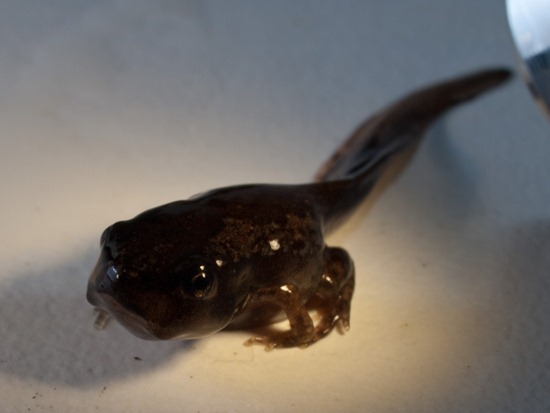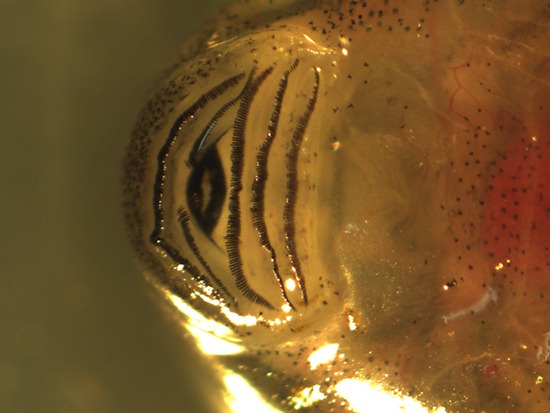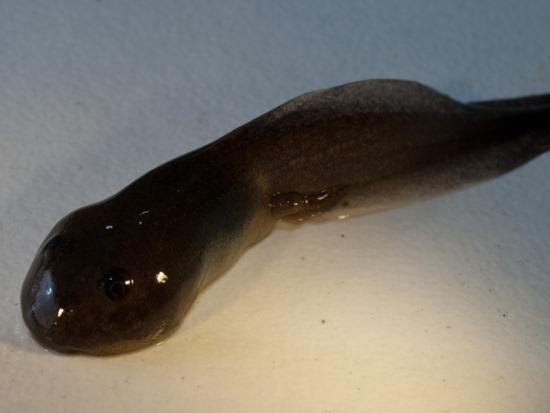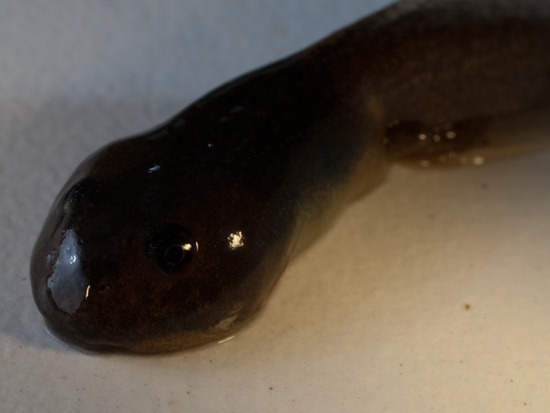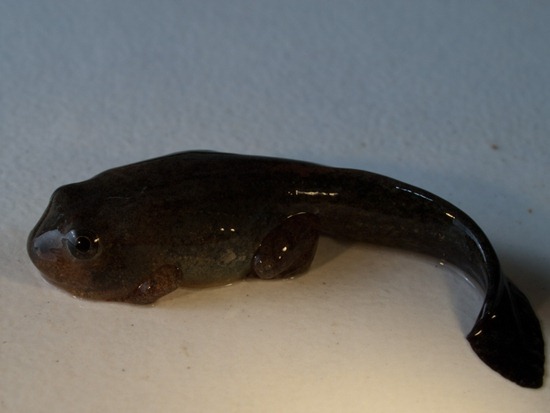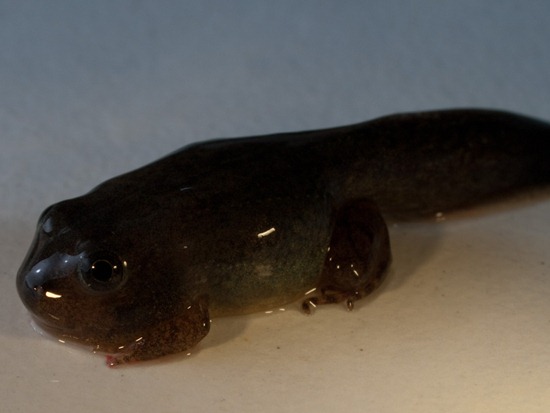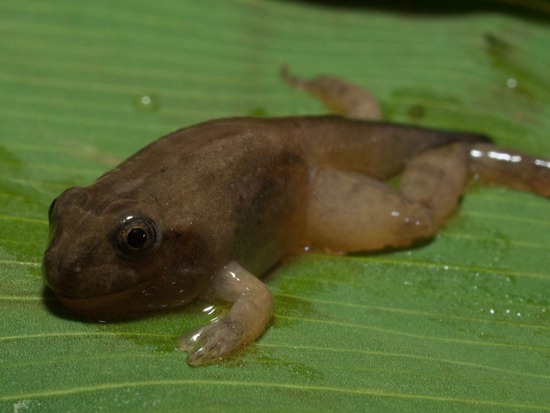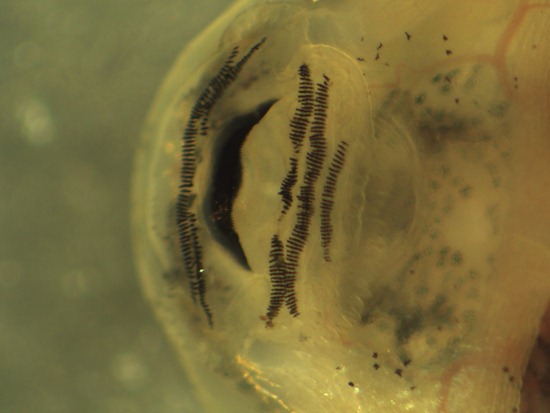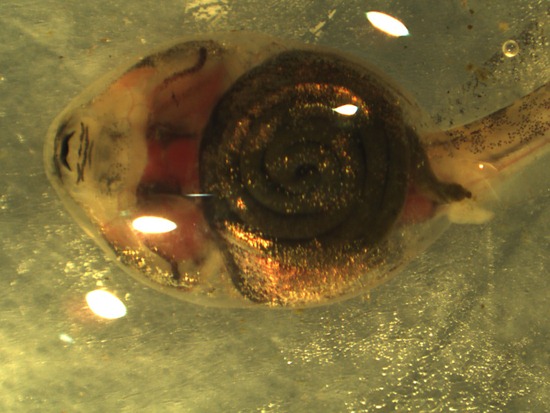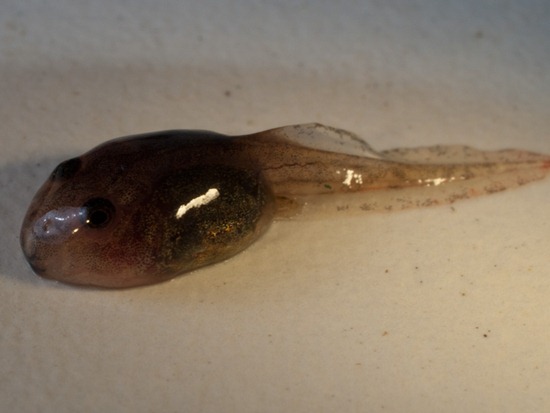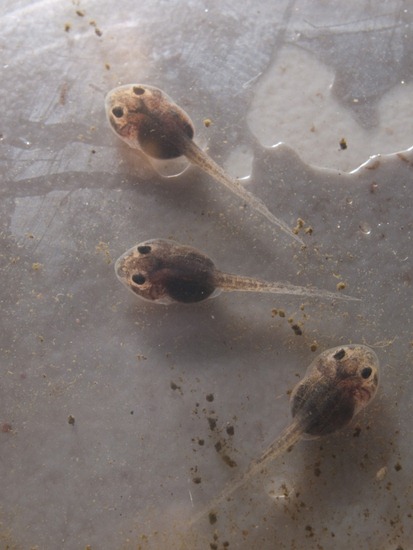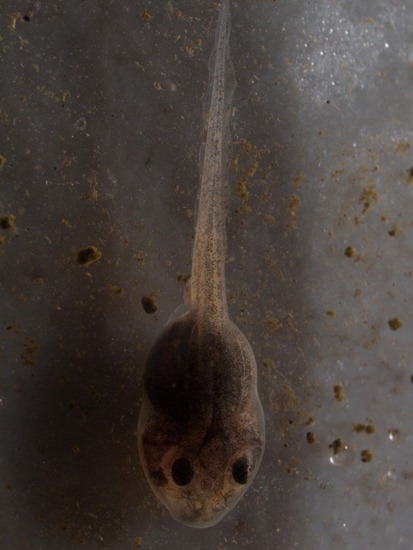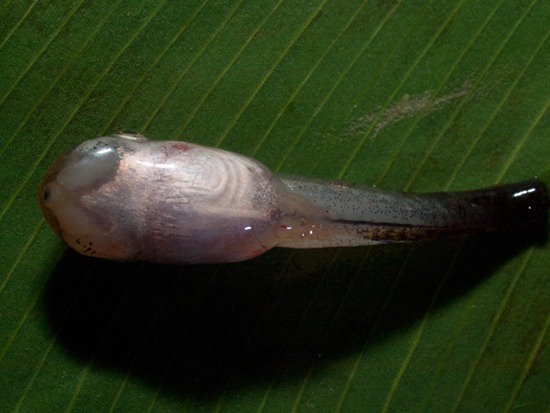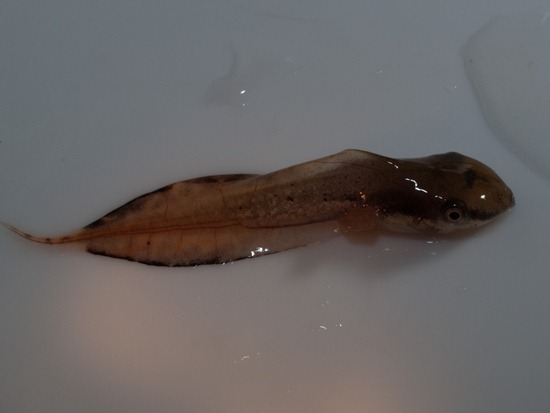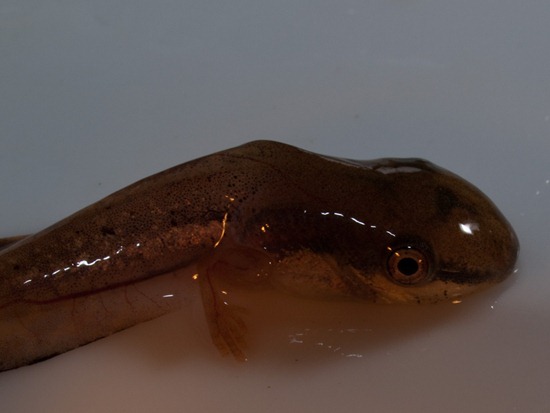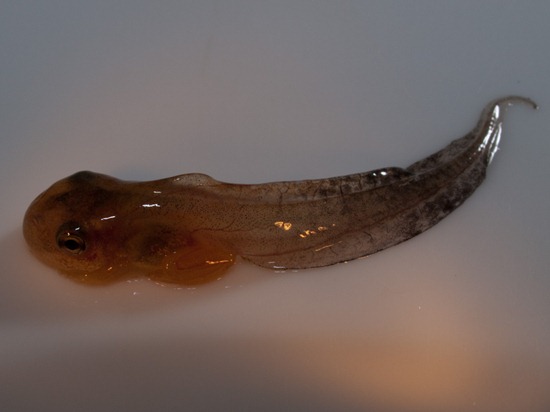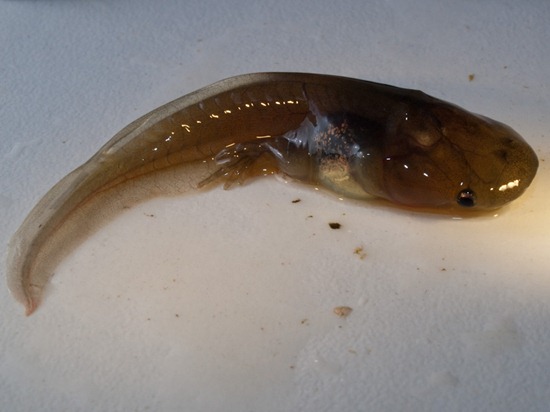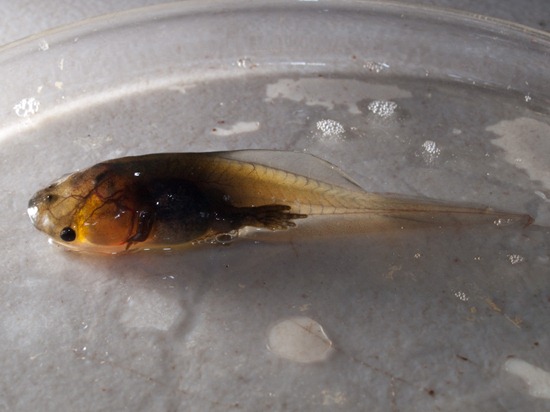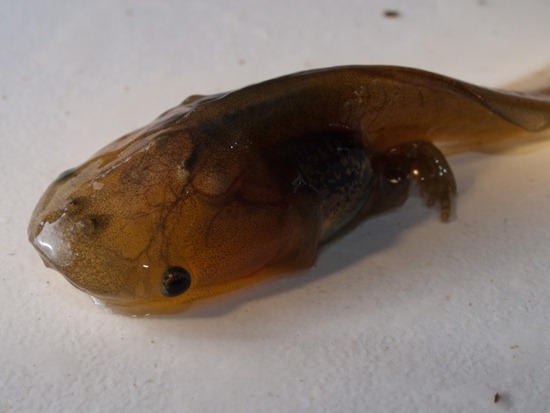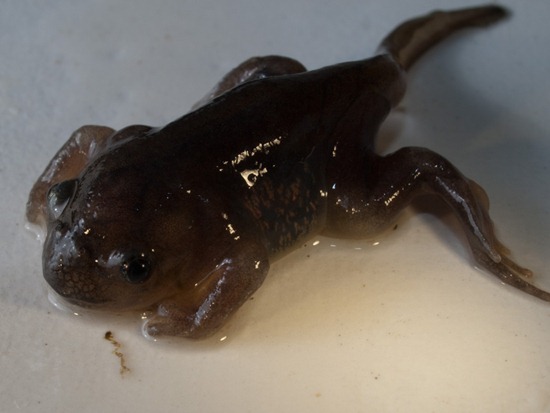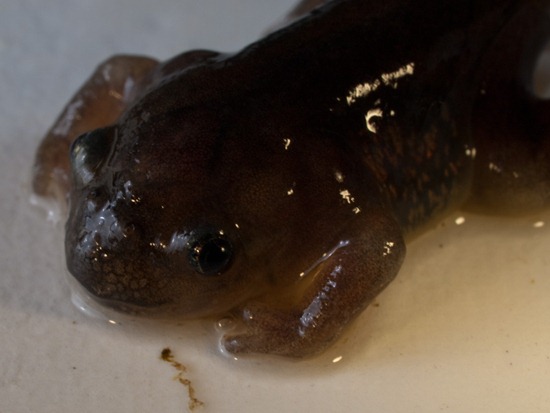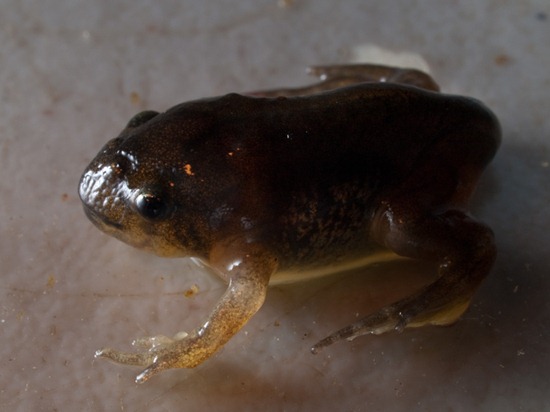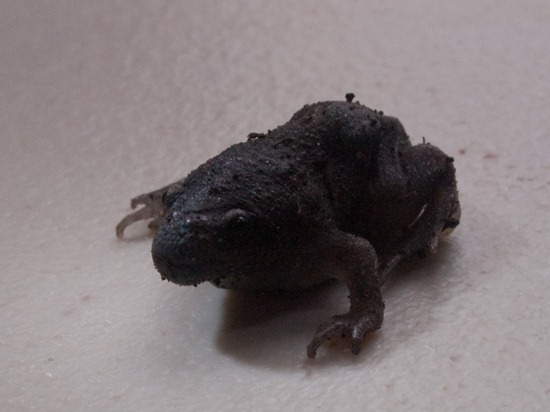Eurycea bislineata eggs are attached to the underside of flat-bottom rocks in riffles. One, if not both, of the parents protect and care for the eggs.
Tag Archives: Herps
Desmognathus ochrophaeus
Senticolis triasips sub-adult
As stated previously, the juvenile Senticolis triaspis has some wildly different markings than the adult. I doubt this individual is really an adult, since it was just under 50 cm in length, but it has lost its juvenile markings. Real adults probably look more like this.
These snakes are ill-tempered, and very aggressive. While making the catch, it lunged and struck several times at me; consequently, getting a nice photograph of it curled up proved difficult. This is the best I got…
Rhinoclemmys and me
The only turtle I saw my entire trip was one of the last days in Palo Verde. Here, I hold a Painted Wood Turtle Rhinoclemmys pulcherrima. The family has recently changed from Emydidae to Geomydidae and the species as been split into three distinct species - only R. pulcherrima is represented in Savage, but now Costa Rica supposedly has R. annulata and R. funerea as well. I guess I’m not positive on the identification…
Tadpoles of Parque Nacional Palo Verde
Mahmood Sasa-Marin, the station director at OET Palo Verde, requested that I photograph tadpoles and metamorphs of the anurans of Palo Verde that he has collected. He has been attempting to rear most of the species here with the intention of learning rearing techniques for experimental purposes. The posts included here are a series of photographs I’ve taken of these tadpoles and metamorphs. In most cases, I’ve photographed the mouth of each species as they are important in identification.
The links below provide access to pages for each species presented. This is not a comprehensive list – it’s a work in progress. The included species are those that have been more or less separated and are being reared. Other anuran species present and breeding in Palo Verde are Leptodactylus poecilochilus, Leptodactylus fragilis (formerly labialis), Hypopachus variolosus, Incilius coccifer, Chaunus marinus and Lithobates forreri.
The post for each included tadpole are below, and this post is available in the above link as a more permanently visible page.
Tadpole posts:
Rhinophrynus dorsalis
Engystomops pustulosus
Incilius luetkenii
Smilisca baudinii
Hyla microcephala
Leptodactylus melanonotus
Incilius (Bufo) luetkenii tadpoles
Identification of Incilius luetkenii (a yellow toad; deformed here) tadpoles has been difficult; the species has only been recently defined, and no description of the tadpole was available before Savage’s key was constructed, so there I. luetkenii is no in the key. The tadpole keys to Chaunus marinus (the marine or cane toad) , but given the reduced number of C. marinus here compared to I. luetkenii, we think the tadpoles below are the latter. This is, of course, one of the reasons Mahmood is rearing the tadpoles. It seems to be going well though as evidenced by the metamorph photographs below!
The tadpole is medium sized to small, and appears dark, making it difficult to photograph. The oral disk is emarginate, and the mouth has 2/3 denticles, with the second anterior denticle having a medial gap.
Other tadpole posts:
Rhinophrynus dorsalis
Engystomops pustulosus
Incilius luetkenii
Smilisca baudinii
Hyla microcephala
Leptodactylus melanonotus
Leptodactylus melanonotus tadpoles
Leptodactylus menanonotus tadpoles are large, fast, benthic generalists with a streamlined body. Their body is somewhat greenish and generally dark. The oral disk is complete, and the mouth is beaked with 2/3 denticles. The second denticle is sometimes broken according to Savage, but has always appeared a below in the specimen I observed.
I’m unsure how to tell the other common Leptodactylus tadpoles from this species (L. fragilis [formerly labialis] and mislabeled as L. poecilochilus here and here).
Other tadpole posts:
Rhinophrynus dorsalis
Engystomops pustulosus
Incilius luetkenii
Smilisca baudinii
Hyla microcephala
Leptodactylus melanonotus
Engystomops (Physalaemus) pustulosus tadpoles
Engystomops pusulosus, like many anurans, was recently changed from Physalaemus. The tapoles are very small, benthic, generalists with an emarginate oral disk, beak and 2/3 complete dentricles. The dentricles are the little black stripes around the mouth below, and the beak is the larger, solid black mouth part. Compared to other tadpoles of similar size (i.e., Incilius), Engystomops has reduced pigmentation and is lighter in color.
Other tadpole posts:
Rhinophrynus dorsalis
Engystomops pustulosus
Incilius luetkenii
Smilisca baudinii
Hyla microcephala
Leptodactylus melanonotus
Hyla microcephala tadpoles
Identification of Hyla microcephala tadpoles is relatively simple here in Palo Verde. They are the only species with a long, filamentous tip to their tails. They also have a dark, lateral line, lack denticles, but have a beak. The other Hylidae species here (i.e. Smilisca) are larger, have denticles, and lack a filamentous tail.
Other tadpole posts:
Rhinophrynus dorsalis
Engystomops pustulosus
Incilius luetkenii
Smilisca baudinii
Hyla microcephala
Leptodactylus melanonotus
Rhinophrynus dorsalis tadpoles
This post shows tadpoles and metamorphs of the infamous Sapo Borracho or Mexican Burrowing Toad. Keys to the tadpoles of this species generally refer to barbals (catfish like whiskers), but they didn’t seem to be present in the specimen I used. Perhaps it’s a plastic phenotype – would turbidity influence barbal presence or absence? The tadpole is relatively large, fast swimming, and with a broad tail. The mouth is terminal and without a beak or denticles.
Other tadpole posts:
Rhinophrynus dorsalis
Engystomops pustulosus
Incilius luetkenii
Smilisca baudinii
Hyla microcephala
Leptodactylus melanonotus

